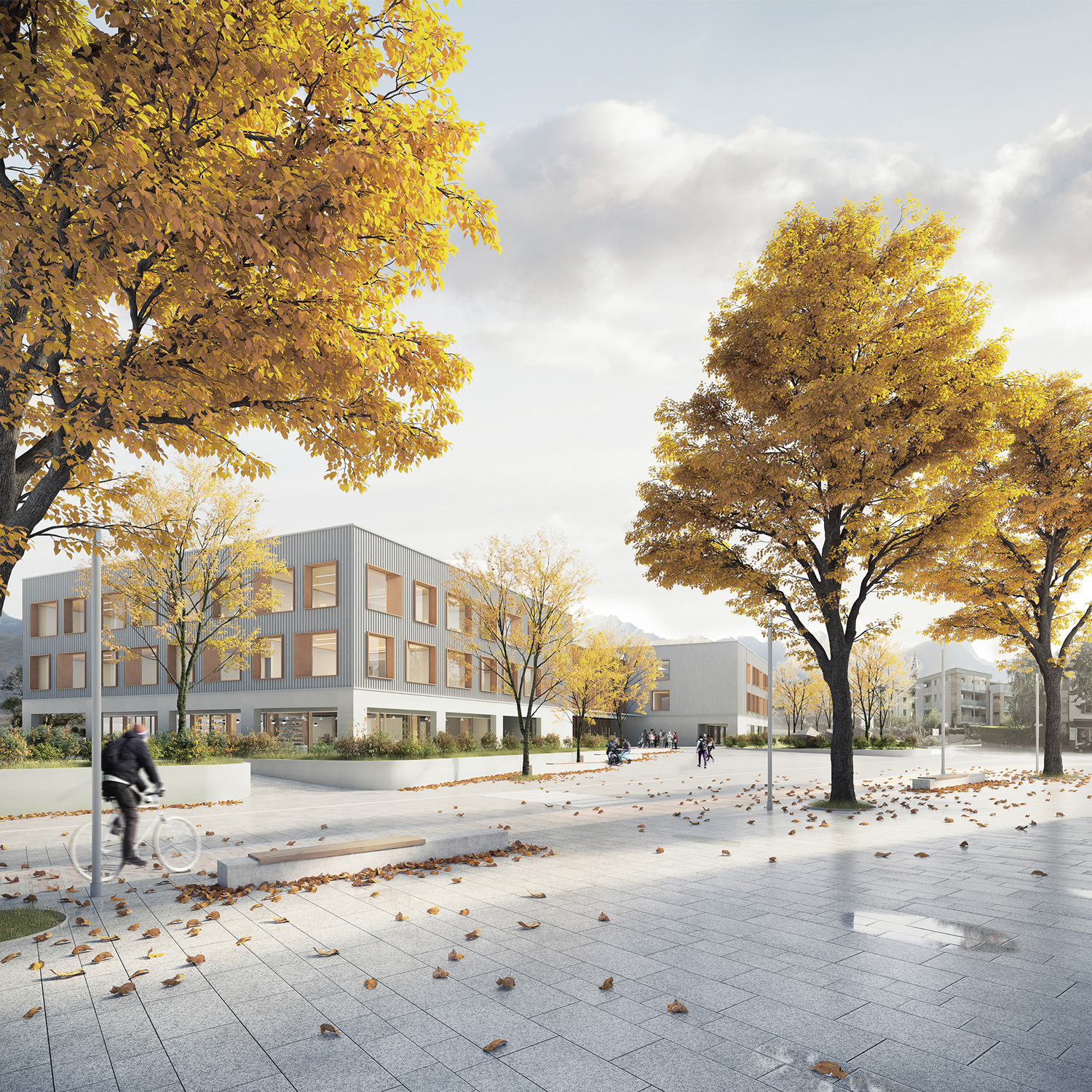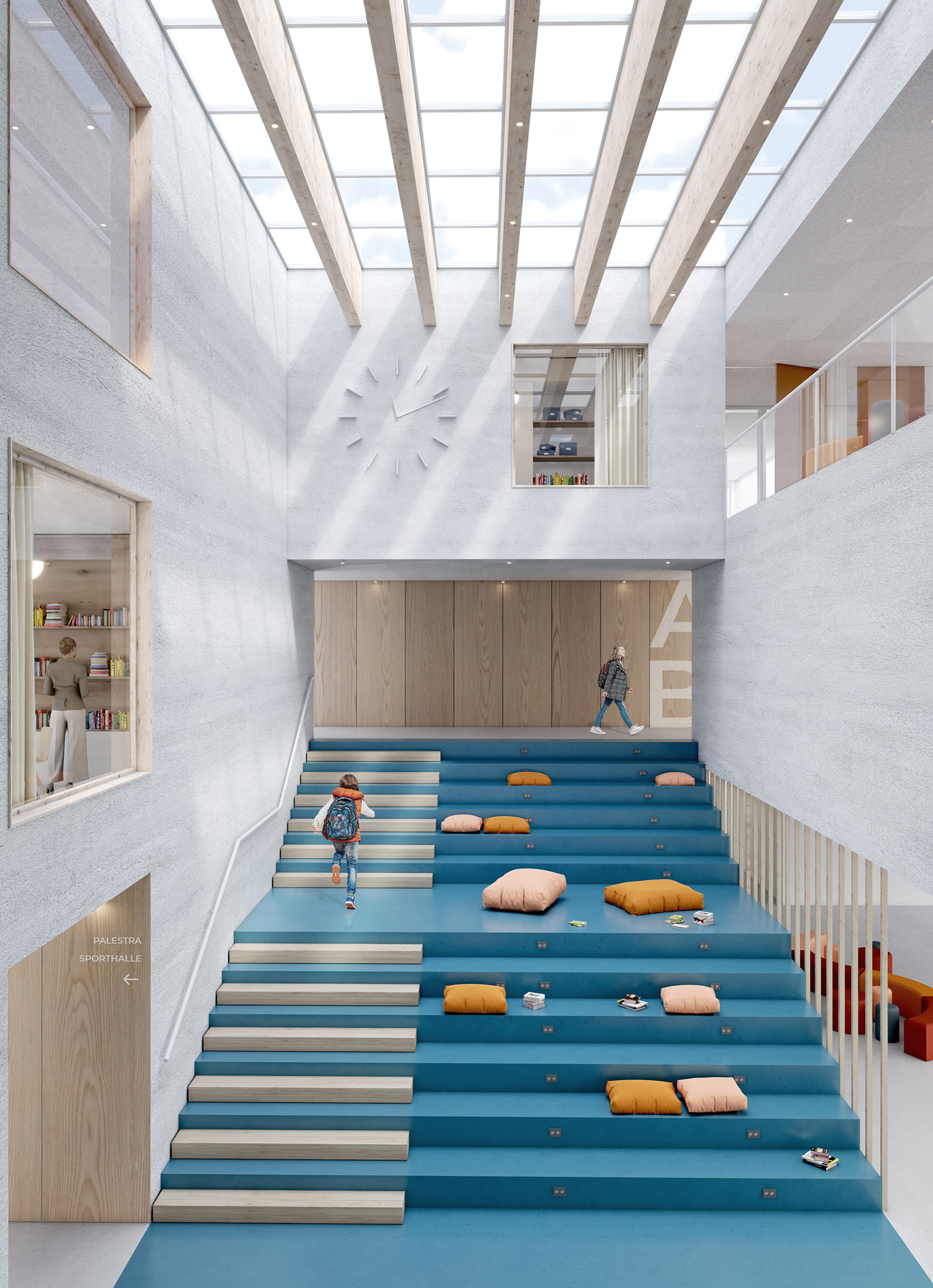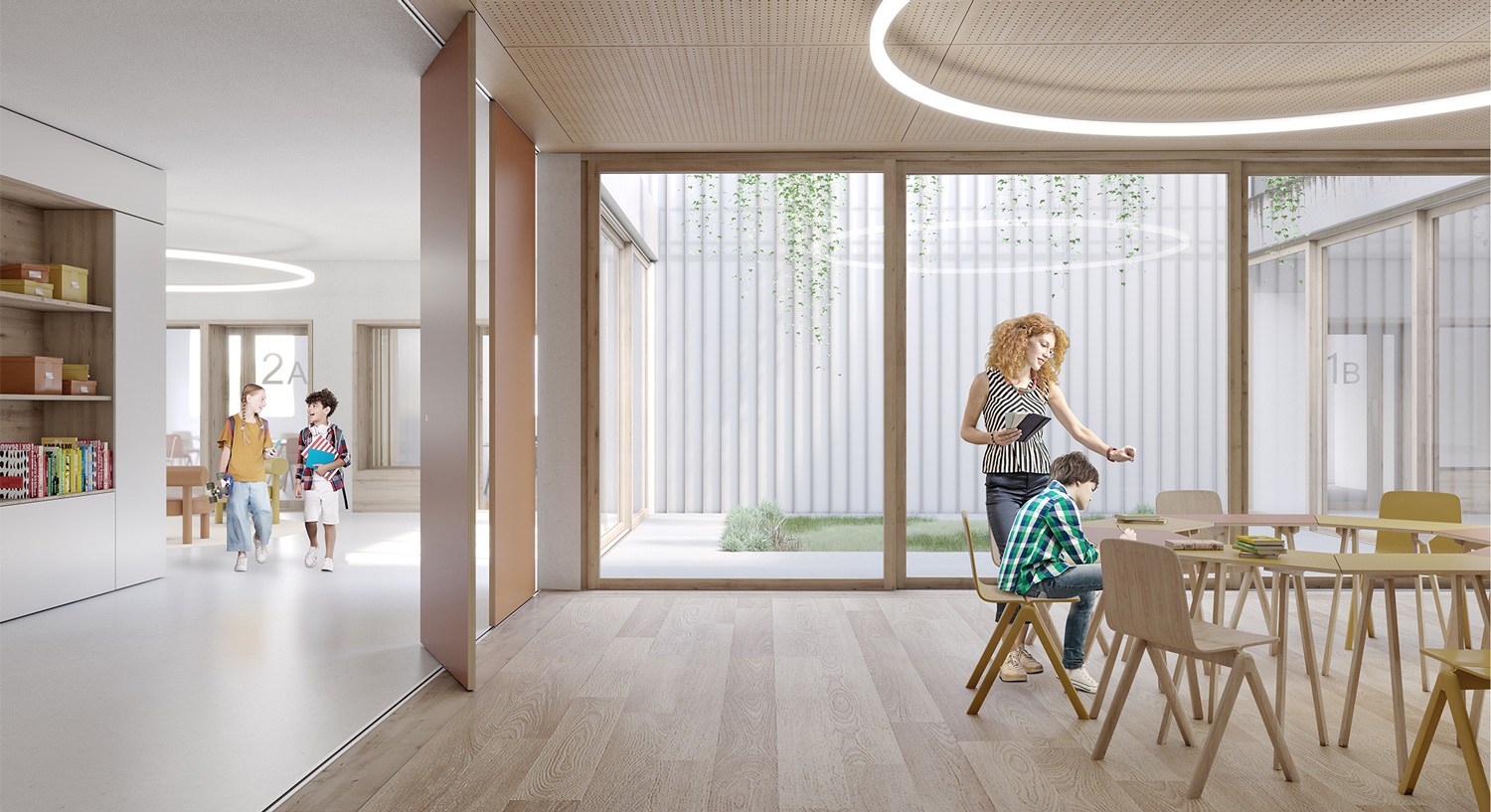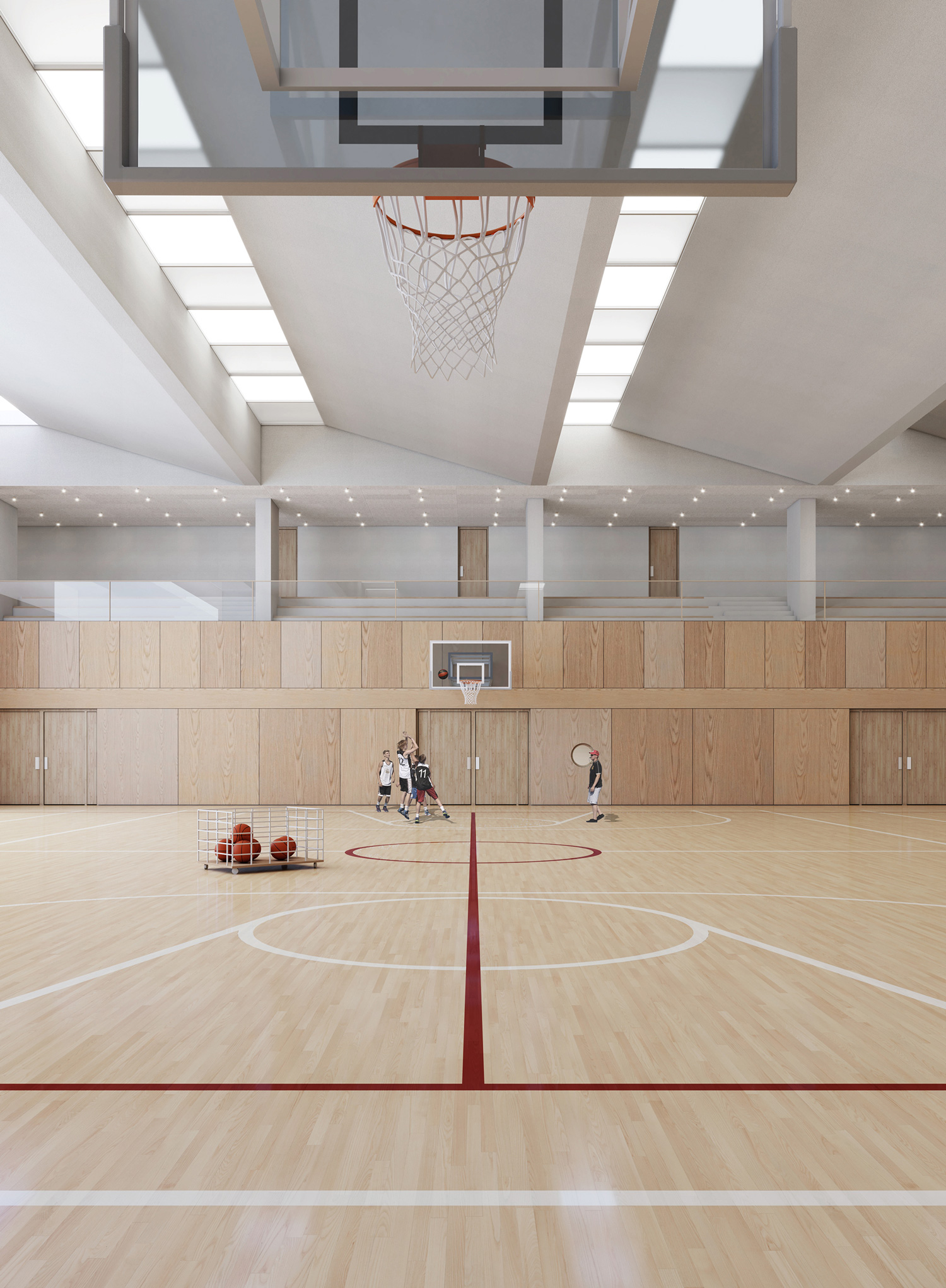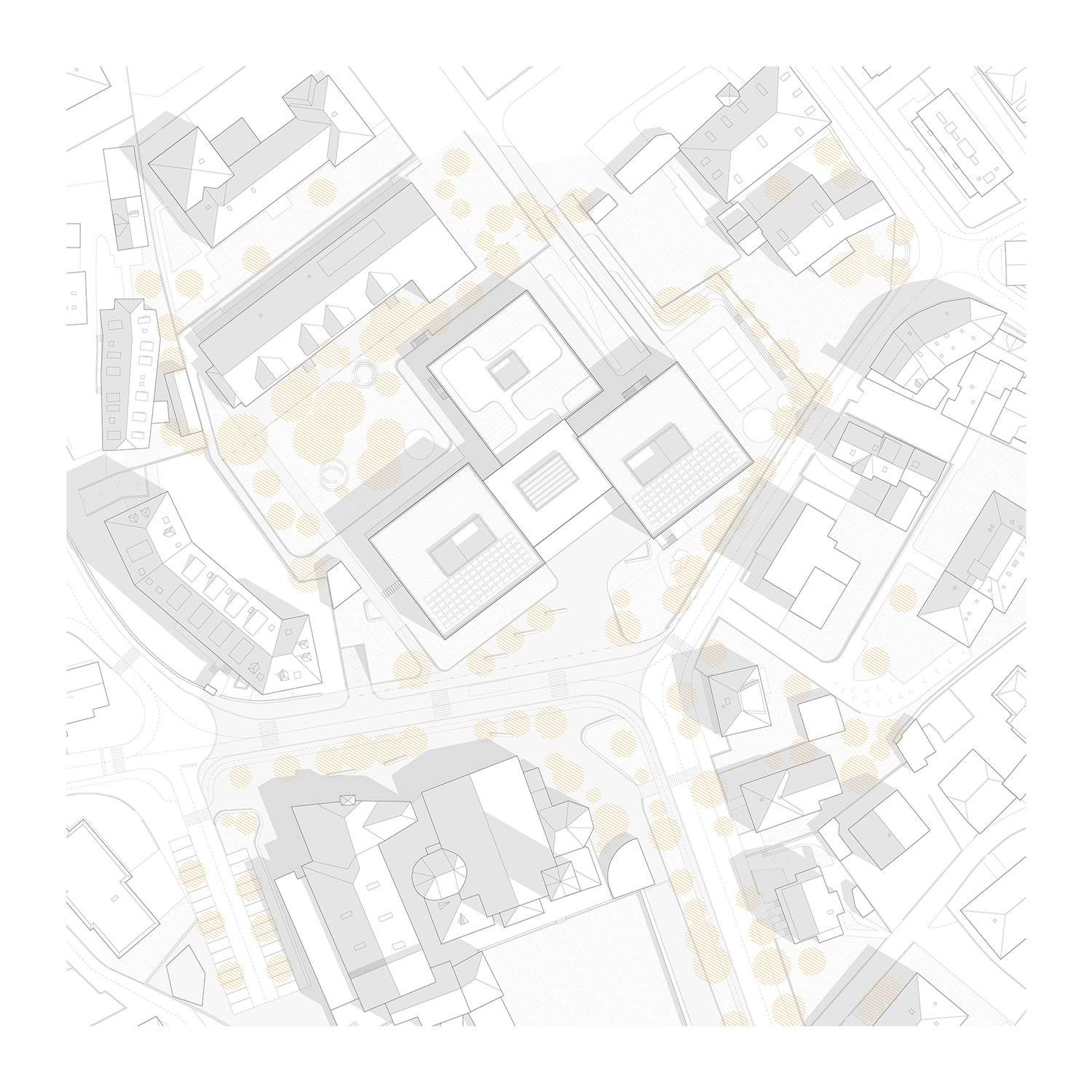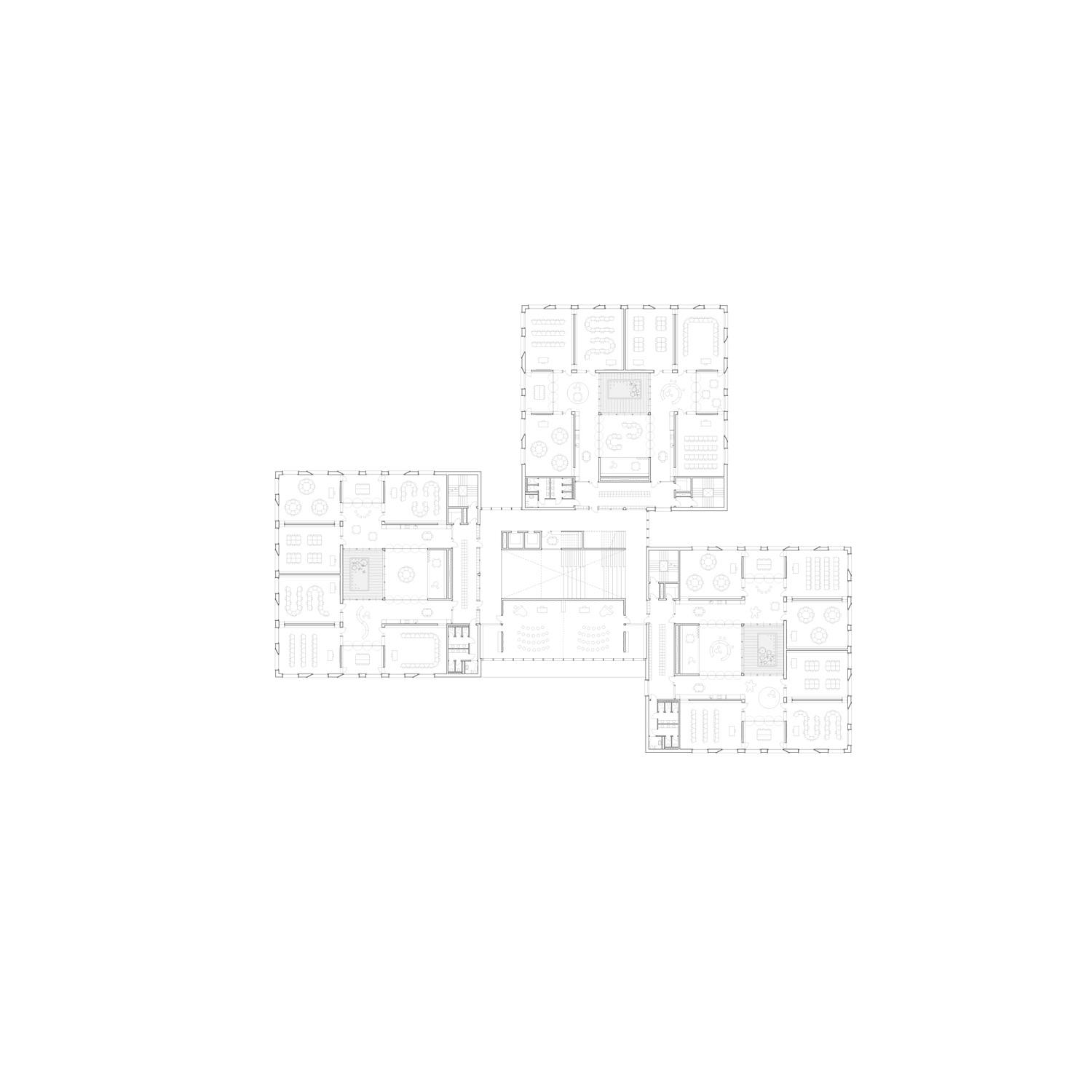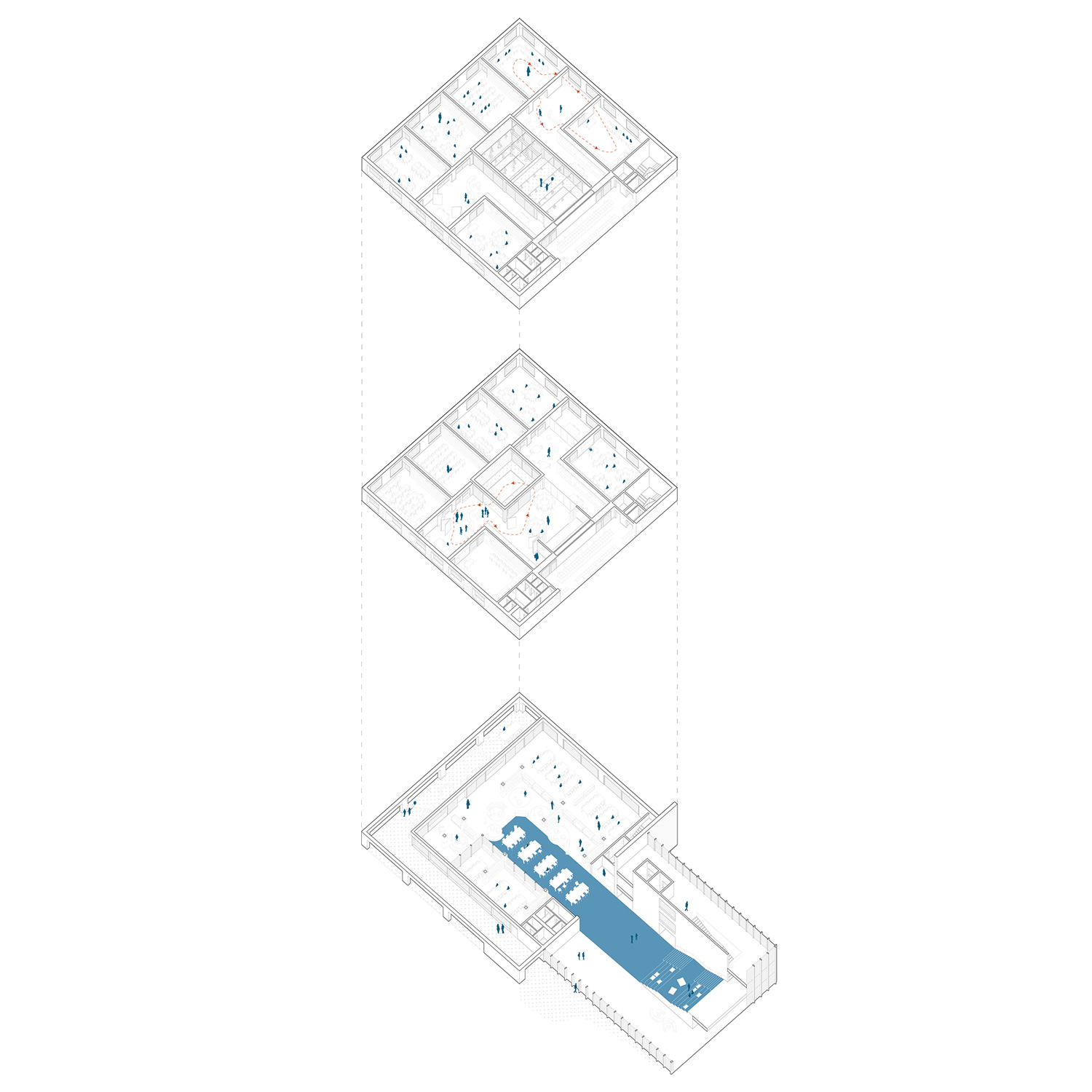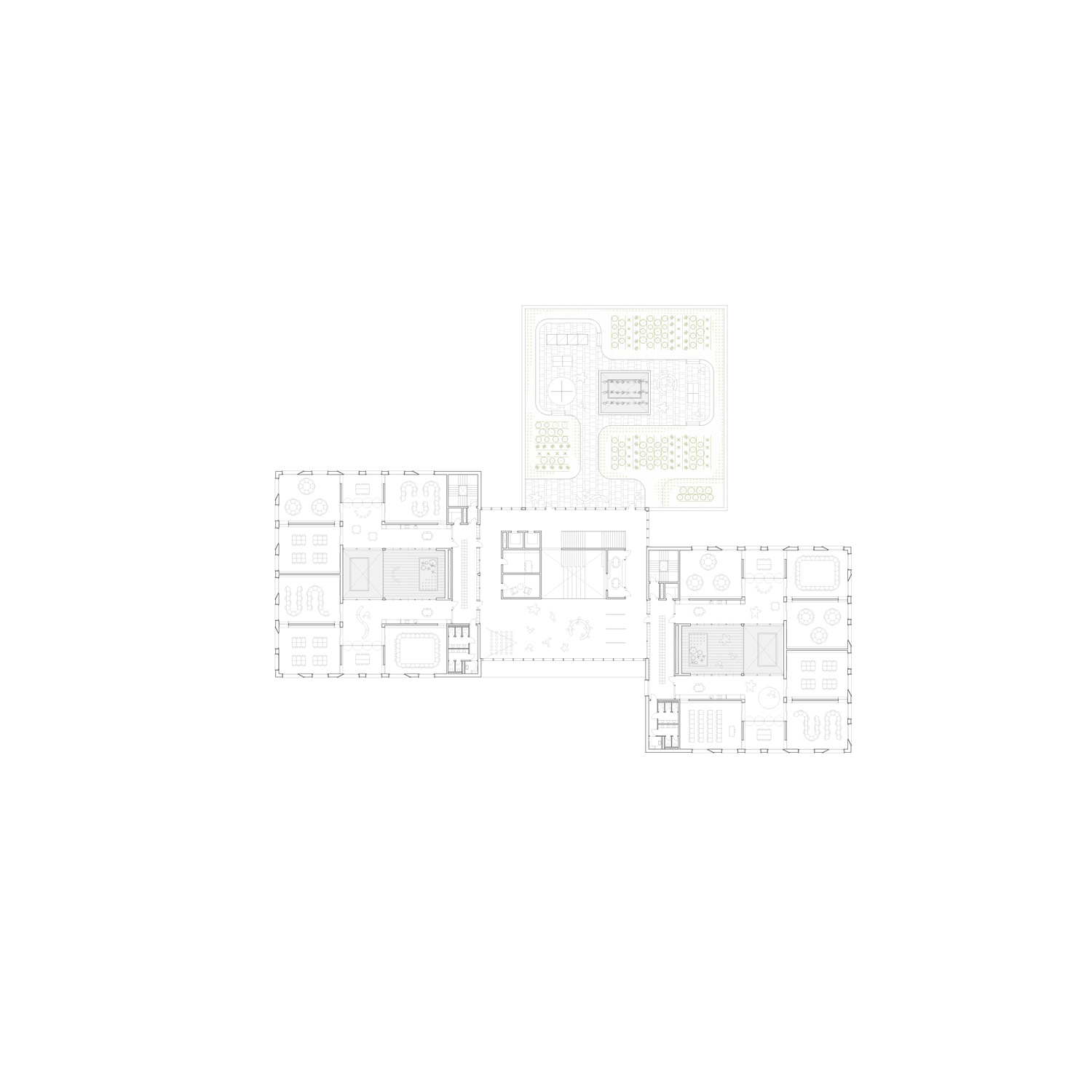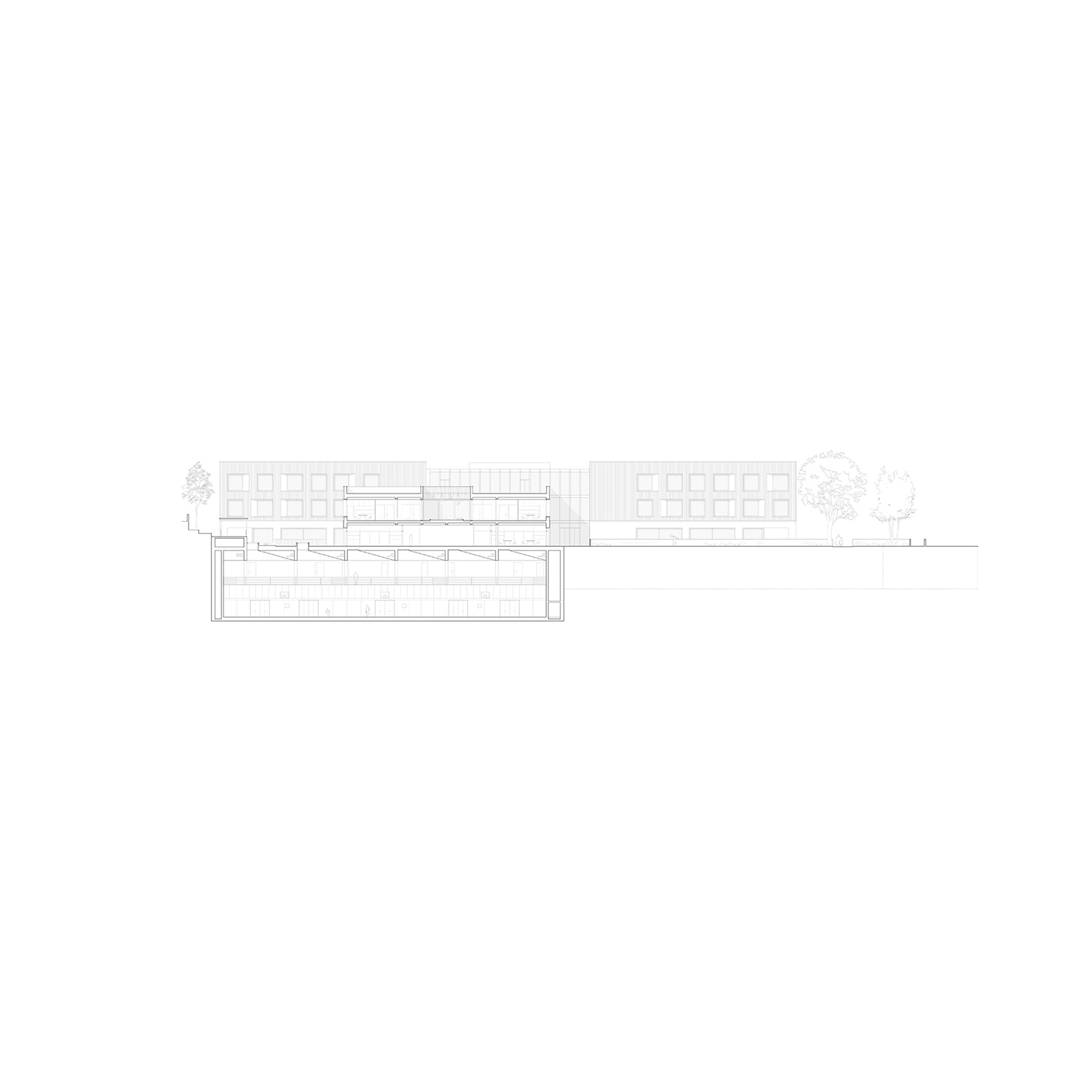2849-BST-IT-2020
Client: Unknown
Status: Competition (2020)
Clasification: Selected
Location: Merano, Italy
Climate: Continental, Humid subtropical
Materials: Concrete, Wood
Environment: Urban
Visualizer: Studio
Scale: 9.400 ㎡ Medium
Types: Education, School
The new Maia Bassa school complex is part of a heterogeneous and very fragmented urban fabric. Instead, the project respects the planimetric orientation of the pre-existing schools, becoming the representative building of the future school campus. Therefore, the design approach focused on creating suitable volumes to best integrate with the fragmented urban fabric. The project includes three large square blocks (29x29m), independent of each other and surrounded by gardens, connected and united by the central volume of the new blue plaza/agora, which becomes the heart of the project.
The need to combine two different schools in a single complex pushed us to propose a building that would not create any kinds of inequality between German and Italian children, emphasizing at the same time the pedagogical differences of each school. Besides being a meeting place for children, the central agora, common to the two schools, becomes the emblem of an integrated and equal community.
The result is a single large complex, made up of different bodies which aggregate to form a unitary organism. The project also aims not to close itself towards the city but to integrate the urban landscape within it. Inspired by the historic district of Merano, generous arcades envelop the building on the ground floor on the side facing the square, to ideally extend the public space inside the school.
The flexible school
To offer spaces able of adapt to future changes, the interior spaces have been designed to minimize connecting spaces: no long corridors but flexible teaching spaces capable of integrating and expanding through mobile partitions and furnishings. The structural modularity of the spaces allows to easily transform the didactic landscape, guaranteeing functional and organizational flexibility. All the school spaces are placed around the large triple-height blue agora that welcomes Italian and German students inside the school and directs them to their respective clusters simply and intuitively.
Around the agora develop the other functions: on the ground floor have been inserted all the functions common to both schools, the library, the laboratories and classrooms of the students, the directorates, the reception rooms and the spaces for the teachers; on the first floor there are the three clusters of the Italian school and the two music laboratories; on the second floor the two clusters and the large square of the German school, finally the garden roof. All the spaces are connected through the central volume, physically and visually linked by the balconies that surround it, favoring the orientation of the students.
The materials of the project
As for the materials, it was decided to use local ones as much as possible, and in any case that would allow the new building to be integrated into the context in the best possible way. On the outside, thus recalling the typical Tyrolean architecture, a differentiation was made between the base, made of concrete, and the upper floors. These are clad in modular shaped aluminum sheets, that through protruding slats evoke the typical facades with exposed wooden frames and create a play of shadows and lights on the façade. The
large windows of the classrooms, with wooden chest of drawers and with splaying, are an exception to the severity of the crowning, giving playfulness to the facade and break the regularity of the windows, characterizing the elevations of the school building.
